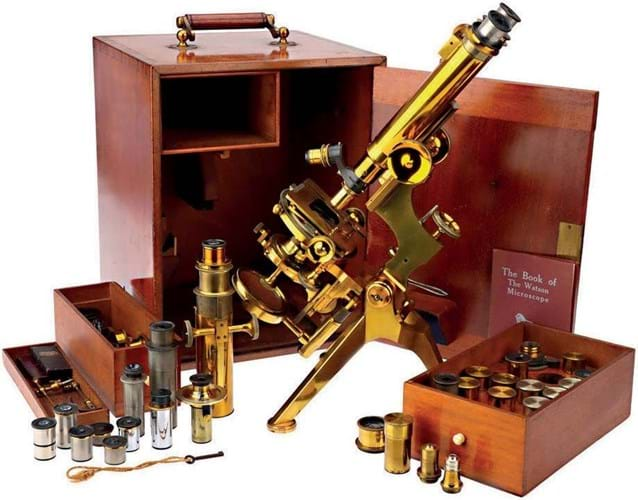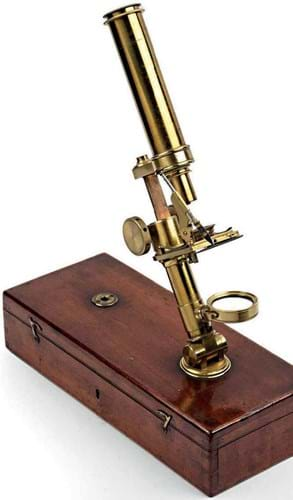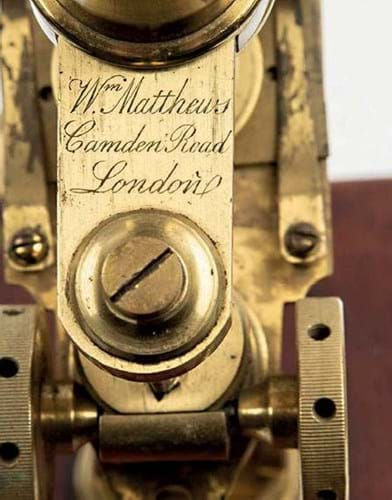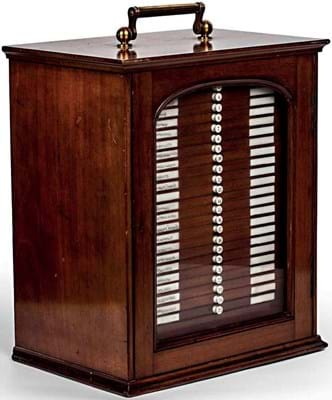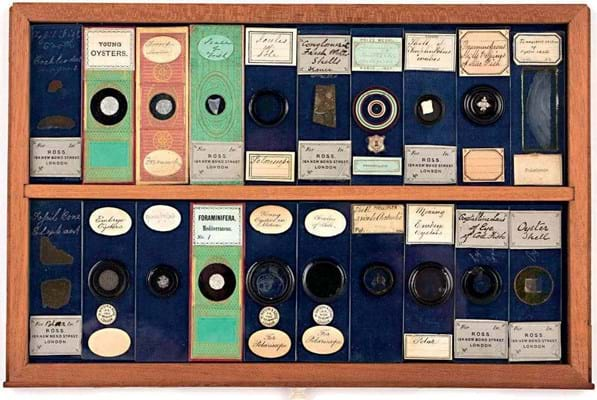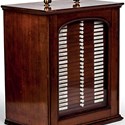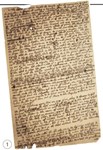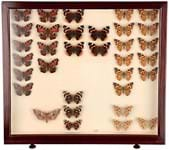First created in the 1770s, in the age before ‘glass and brass’ microscopes, these used a mahogany pyramidical shaped body to project an image of the specimen on a ground glass screen, where it could be viewed by multiple people at the same time.
The original design, which also made it easier to draw or trace the image, was by George Adams Jnr (1750-95). However, after fellow Holborn maker W&S Jones bought Adams’ business and stock, the model was produced with some minor modifications well into the 19th century.
Remarkably the example offered by Flints (25% buyer’s premium) on May 24 came with its original receipt for £18 8s 0d. It was dated October 26, 1824, so, at the time, it was 50-year-old technology. Estimated at £7000-10,000, it took £16,000.
Belgian and Brit combo
The Victorian Watson-Van Heurck microscope is named after its two inventors: the London optical instrument maker William Watson and the Belgian diatomist Jean-Baptiste van Heurck.
In the last quarter of the 19th century, it was one of the most advanced microscopes of its time and, in various iterations, remained in use until the mid-20th century.
Watson had begun working on the design of a high-quality microscope in the 1870s, motivated by a desire to aid scientific research and medical diagnosis in particular. The design he created with van Heurck addressed several limitations of existing microscopes. The optics had a better range of magnification and resolution while a more stable base, reduced vibrations and improved the clarity of the image.
However, the key innovation was its use of a sub-stage condenser that allowed for better lighting and reduced the distortion caused by uneven illumination. It proved particularly effective for studying diatoms, single-celled organisms with intricate, glass-like shells, that are difficult to observe with standard microscopes.
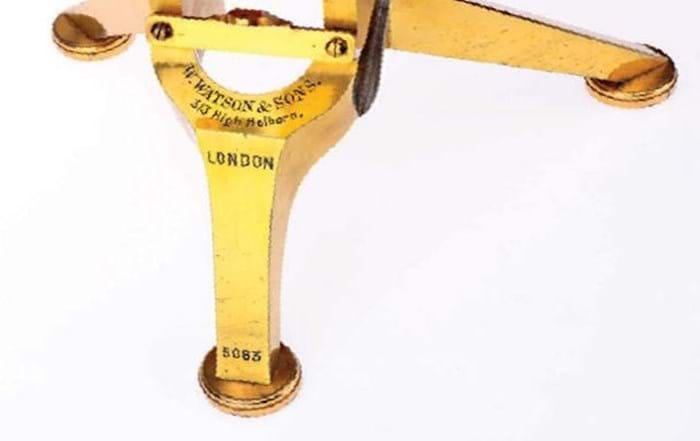
Victorian Watson-Van Heurck microscope detail of the special order tripod base, £5500 at Flints.
The Watson-Van Heurck was available in various models. The example offered was the most expensive and made only as a special order. Dating to c.1900, it features a special ‘exhibition’ tripod stand and comes in a mahogany cabinet with two drawers of accessories including three eyepieces and a suite of objective lenses. The hammer price at Flints was £5500.
Enigmatic maker
A Victorian portable microscope sold as part of Mallams’ (25% buyer’s premium) Oxford Library sale on June 21 was a rare type by an enigmatic maker.
The model, which is made to be mounted on the mahogany case for use in the field, is signed for William Matthews of Camden Road, London.
Very little is known about this maker who is thought to be unrelated but contemporary with the William Matthews (1815-68) workshop on Portugal and Carey Streets. The only instruments carrying his name and address are these curious case-mounted microscopes.
Mallams’ model represents a new addition to a small number of survivors including the identical example in the Science Museum dated to c.1858. It was estimated at £80-120 but took £850.
Leading the scientific instruments in this Oxford sale was a fine Victorian mahogany microscope specimen slide case. The 26 drawers included an extensive collection of period slides showing geological, botanical and zoological specimens. It took £3000 online.




